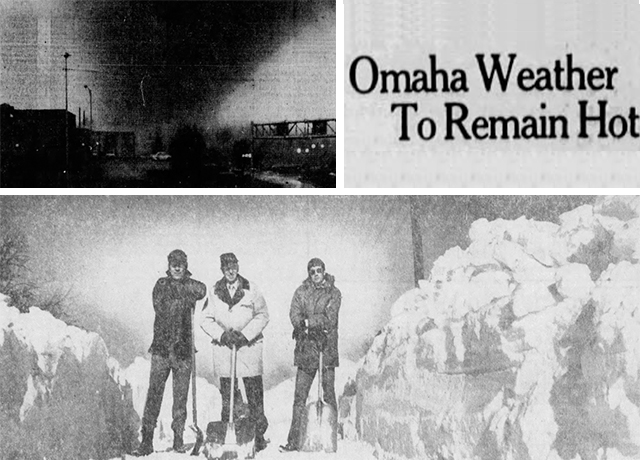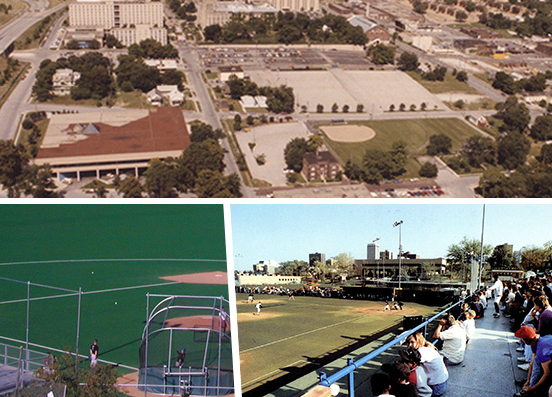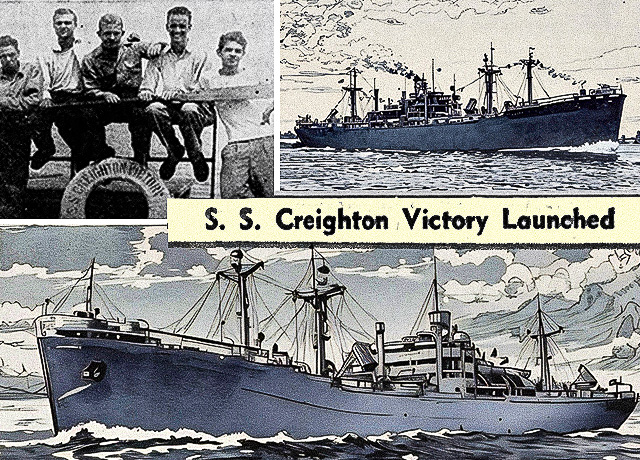Featured Testimonial About Creighton University
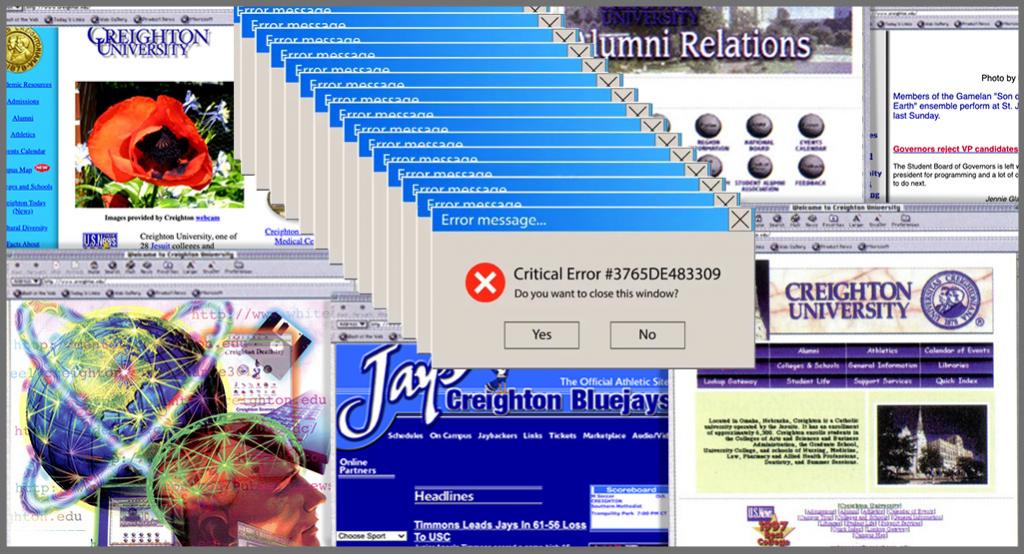
The Internet teems with e-mail messages.
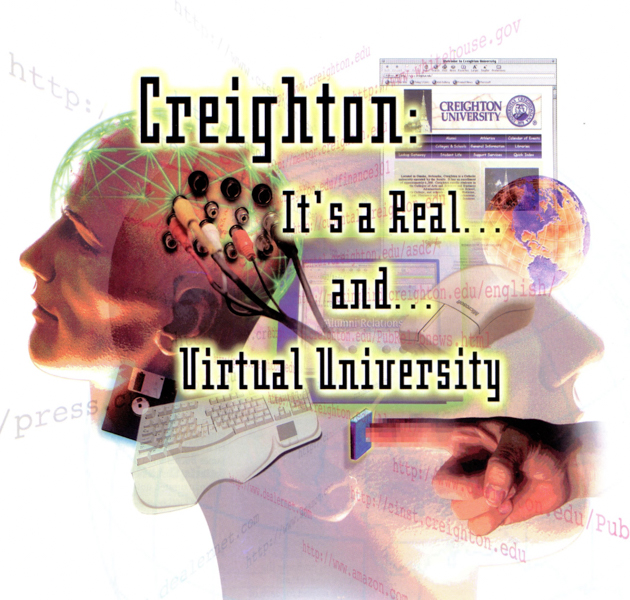
Greetings, fellow Internet surfers. We hope you enjoy the following online article, which features several of the latest advances in digital experience technology, including bolded text, GIF images and hypertext links.
* * *
By Micah Mertes
Creighton might live at the bleeding edge these days, but it wasn’t always so. Our journey to the wider world of web has been marked by ups and downs, by triumph and heartbreak, by .coms and .edus and all the URLS in between.
In our latest roundup of Creighton anniversaries, we look at several chapters in the University’s long and complicated relationship with the Internet. From the wiring of the residence halls to the launch of the website to the first campus webcam, here are a few of the milestones that paved Creighton’s path to the information superhighway.
* * *
The late ’80s/early ’90s
One can’t pinpoint the Internet's arrival at Creighton to a single moment in time. It came to campus in dribs and drabs over several years, with librarians, faculty and staff plugging into these burgeoning networks well before the bulk of the student body did.
Below are a few attempts from the time to explain what these nets (so many nets) meant for the larger Creighton community.
From the Creighton Cornerstone in 1990:
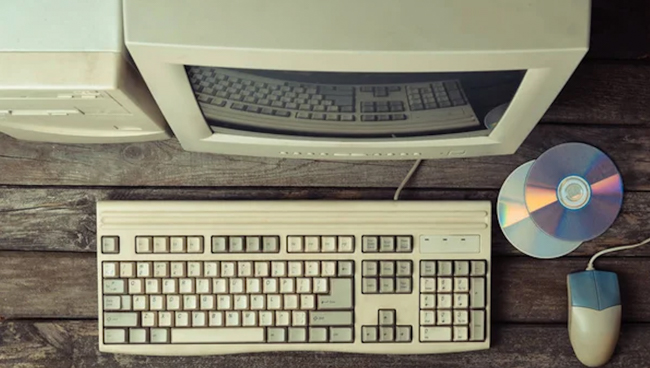
At present our campus does not have access to national networks. If everything goes according to plan, sometime in 1991, JAYNET will link Creighton to MIDNET (at UNO). MIDNET will link users to Internet, the “network of networks” which provides connection to NSFNet, CSNet, Milnet, ARPANET and the DRI.
How have we managed to live all these years without the “nets” and what are they going to do for us? Within our campus community, we will be able to send and receive messages from each other via our personal computers. One morning, you may turn on your computer and be faced with a list of your overdue books! Frightening thought!
From the Creightonian, a few years later:
Imagine sitting down at your computer and looking up the latest card catalog entries from the University of Calgary, or sending electronic greetings to a friend in Europe, all in a matter of minutes.
It may sound impossible and straight out of a science fiction novel, yet this technology is already available and is coming to Creighton. In fact, some faculty and staff members have already started using it.

This new computer technology is known internationally as “Internet” and on campus as JAYNet. It is an electronic link between connected computers throughout the world and throughout campus.
The Internet is a vast, burgeoning system of computer networks connecting an estimated 100,000 host computers and 3 million users at educational and research institutions worldwide.
The final sentence of the paragraph would prove more prophetic and sinister than anyone could have known:
“The Internet teems with e-mail messages.”
* * *
Don’t want to surf the Web for previous Year of Years installments? You can find our growing series archive here.
* * *
JayNet completed
30 Years
JayNet was the first iteration of Creighton’s “superhighway of campus computers.”
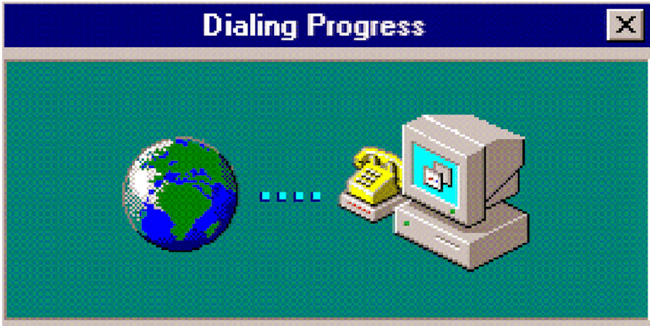
By the spring of 1992, Creighton had installed three and a half miles of fiber optic cable to connect JayNet throughout campus. By the fall semester of 1994, the campus was entirely wired, with JayNet ports installed in the rooms of every residence hall, prompting a boom in Internet usage.
Students were given Bluejay accounts, which provided access to email and two programs: Gopher (an info-retrieval menu) and Lynx (a Web browser). There were more than 3,000 Bluejay Internet accounts by the end of 1994, 1,000 more than the spring before. The flood of accounts slowed JayNet’s processing time and created countless headaches for the Computer Center.
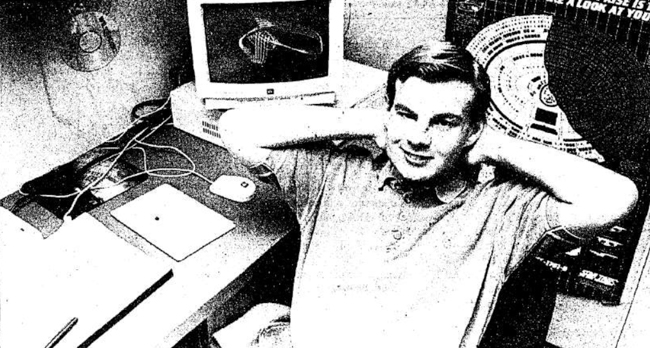
Making matters worse was a clever freshman named Derrald Farnsworth-Livingston, BSCS'99, who found a way to open 60 simultaneous connections through his Bluejay account, locking up the system for anyone else to use. When he was caught, he said he’d just wanted to see if it would work.
For his stunt, Derrald received a slap on the wrist, with his Bluejay account suspended for a week. But a few days later, in a Catch Me If You Can-style turn of events, the Computer Center hired him as a help desk operator. (Derrald didn’t go on to become a notorious hacker but an accomplished nature photographer. See his beautiful photos of Nebraska and elsewhere here.)
For alumni and friends wanting to sign onto the “Bluejay” network, the process was almost absurdly complex. See the lengthy instructions the University provided alumni in 1995. (Come for the discussion of proper modem settings — “9600 baud, 8 data bits, no parity, 1 stop bit and full duplex.” Stay for the ahead-of-its-time advice on proper emoji “netiquette.” )

Creighton eventually provided students with a JayNet 101 online computing guide and Bluejay account FAQ, each of which has been archived by Archive.org. Reading either guide today feels like flipping through a copy of The Old Farmer’s Almanac from the 1900s. A distant transmission from an alien world.

* * *
Creighton.edu
30 years
Creighton’s first website went online in the summer of 1994 (though the site wasn’t accessible to everyone at first).
We were somewhat grandiose when describing the site’s launch, but hey, it was an exciting time. From the Window magazine:
Creighton has elbowed its way to the frontier, harnessing the powers of a medium still in its infancy to serve the ancient goals of education and community.
Unfortunately, we don’t have any screenshots of what the site looked like in 1994, but thanks to the Wayback Machine, we can show you how the site (and some of its pages) appeared 25 or so years ago.
Creighton.edu in 1997:
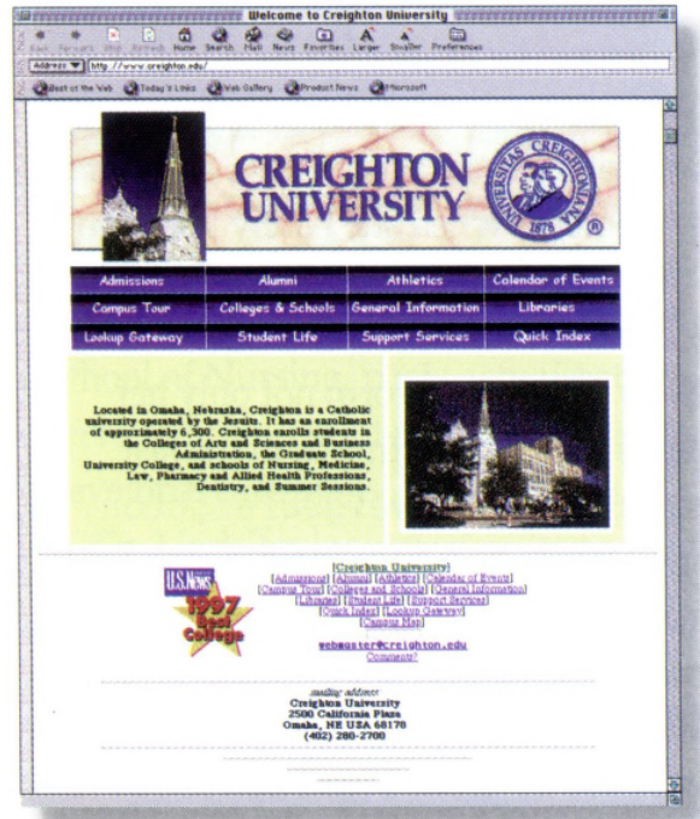
Creighton.edu in 1999:
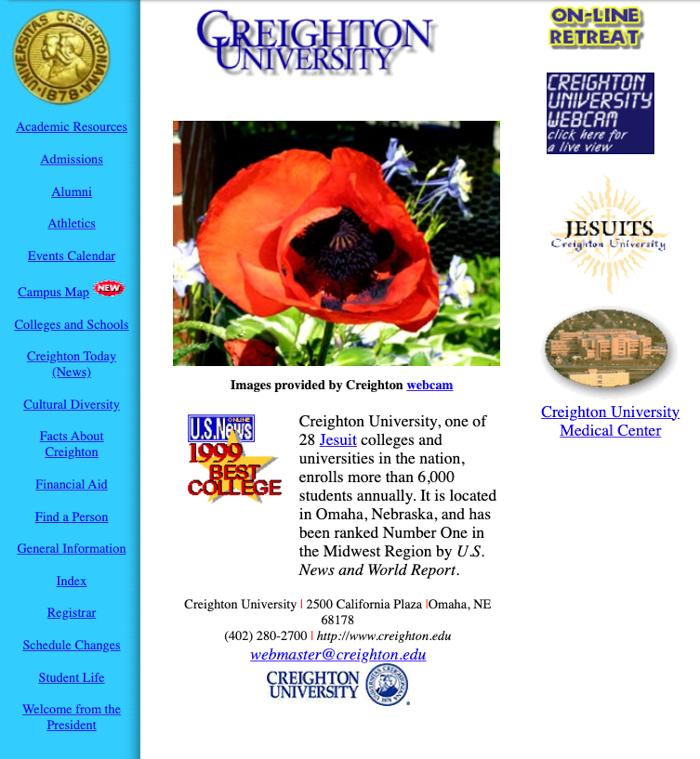
The Creightonian in 1999:
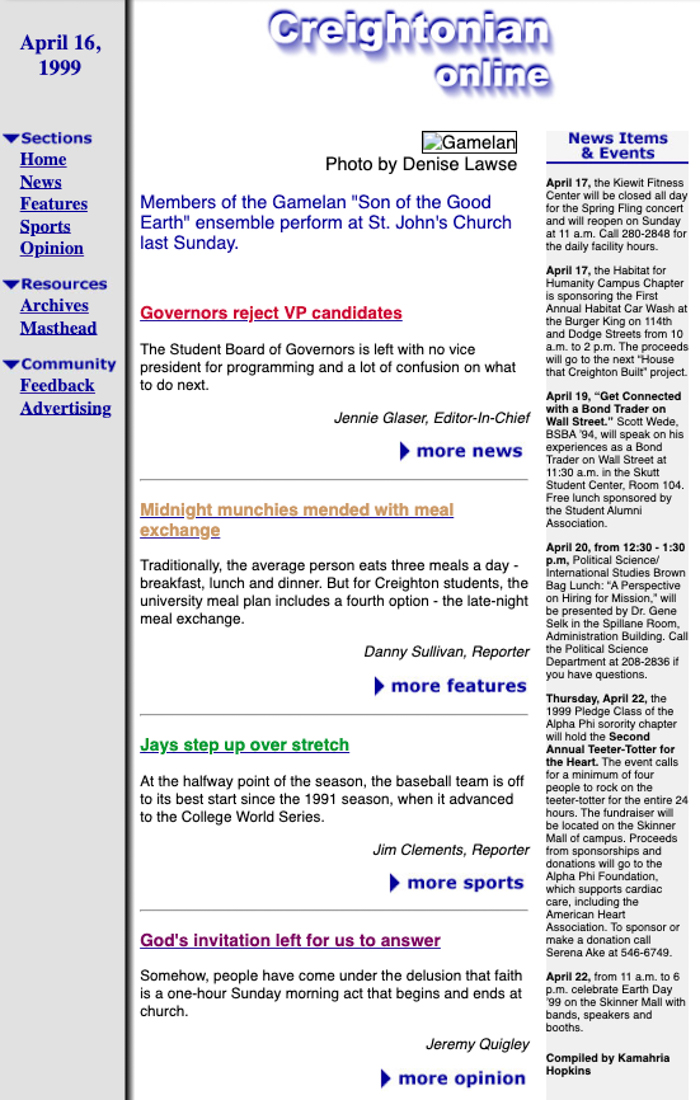
University Communications in 1997:
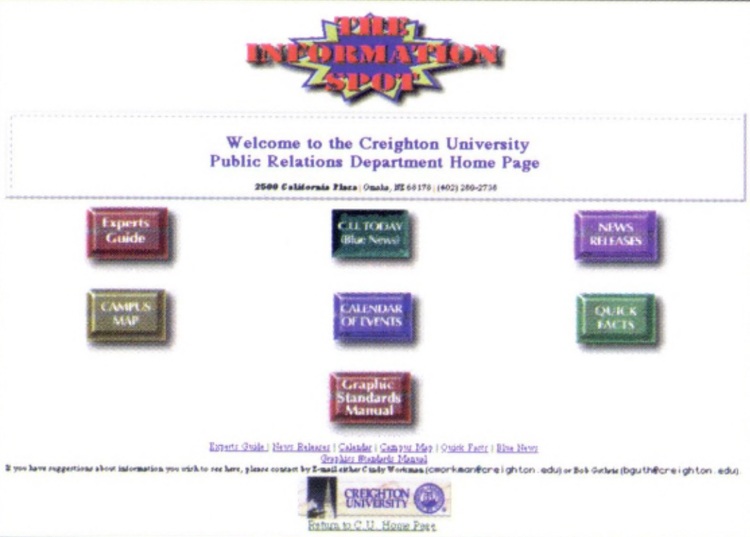
Alumni Relations in 1997:
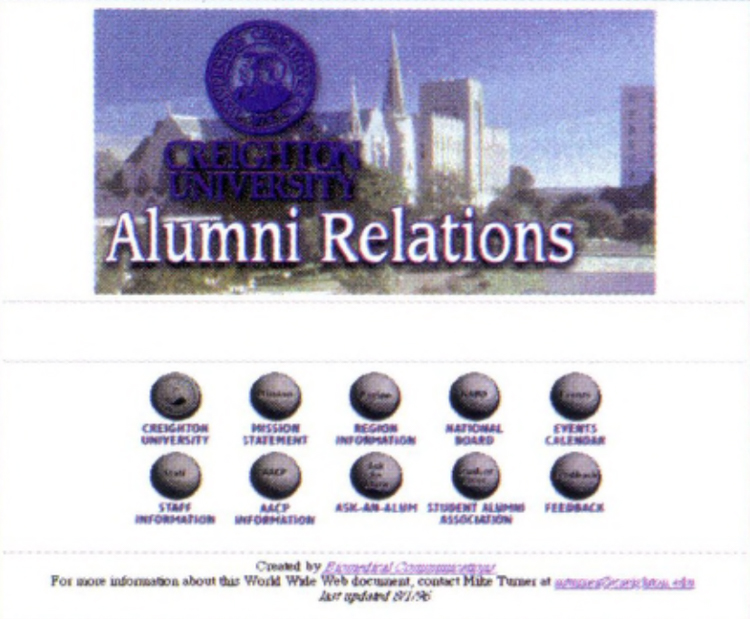
Site traffic was slow going in the early years, but through continued word of mouth and marketing, the site started to draw tens of thousands of pageviews each month.
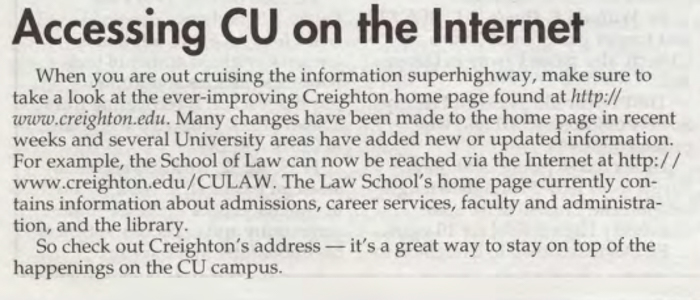
* * *
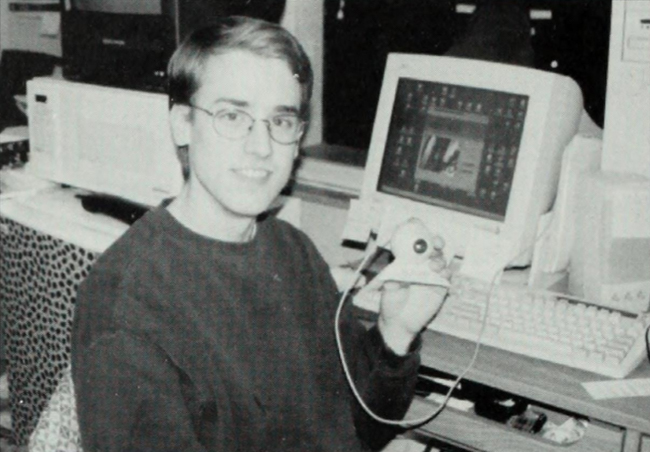
The Webcam
25-ish years
Around 1998/1999, business student Jay Langhurst, BSBA'01, pointed a webcam at The Mall from his ninth-floor room in Swanson Hall and gave alumni live 24-hour access to campus.
Jay told the Creightonian he started the webcam because, when he was an out-of-state prospective student considering Creighton, he didn’t feel like he could get a clear idea of the campus layout. Starting the webcam was his way of providing this service to future students and alumni wanting to know how the campus was changing.
Once he received Creighton’s permission to set up the webcam, Jay purchased the camera and required software on his own dime. It became so popular that the University gave it its own webpage: webcam.creighton.edu.
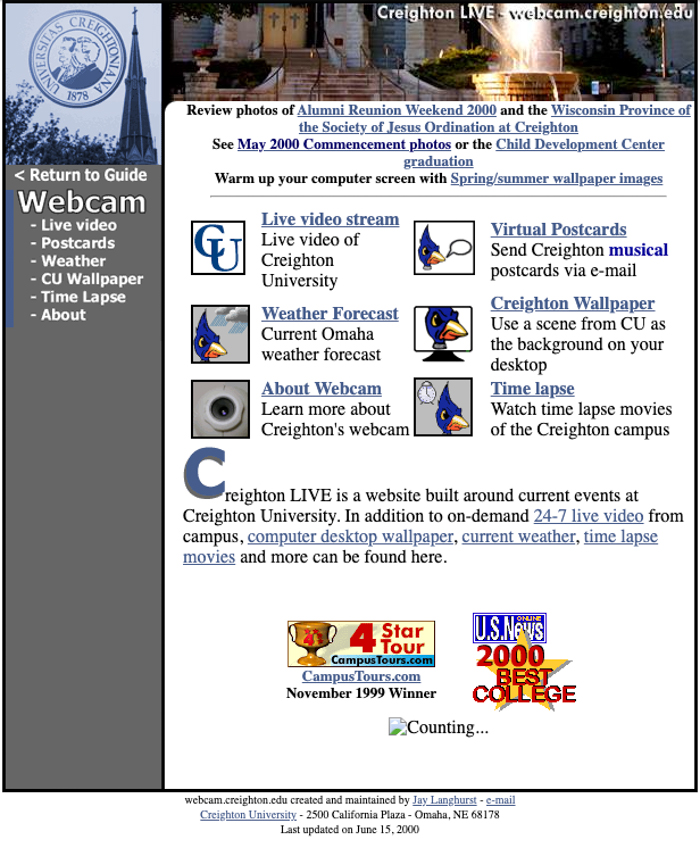
By the spring of 1999, the webcam had received more than 52,000 visits from a dozen different countries. Jay said at the time that he was excited to see the webcam “help people get into the Creighton spirit both on and off campus.”
* * *
GoCreighton.com
25 years
By 1999, Creighton Athletics had already had a webpage for years, but it was “terrible,” one of the worst in the Missouri Valley Conference, the Sports Information Office lamented at the time.
That all changed with the launch of GoCreighton.com (which remains the site’s URL today). Here’s what the first site looked like:
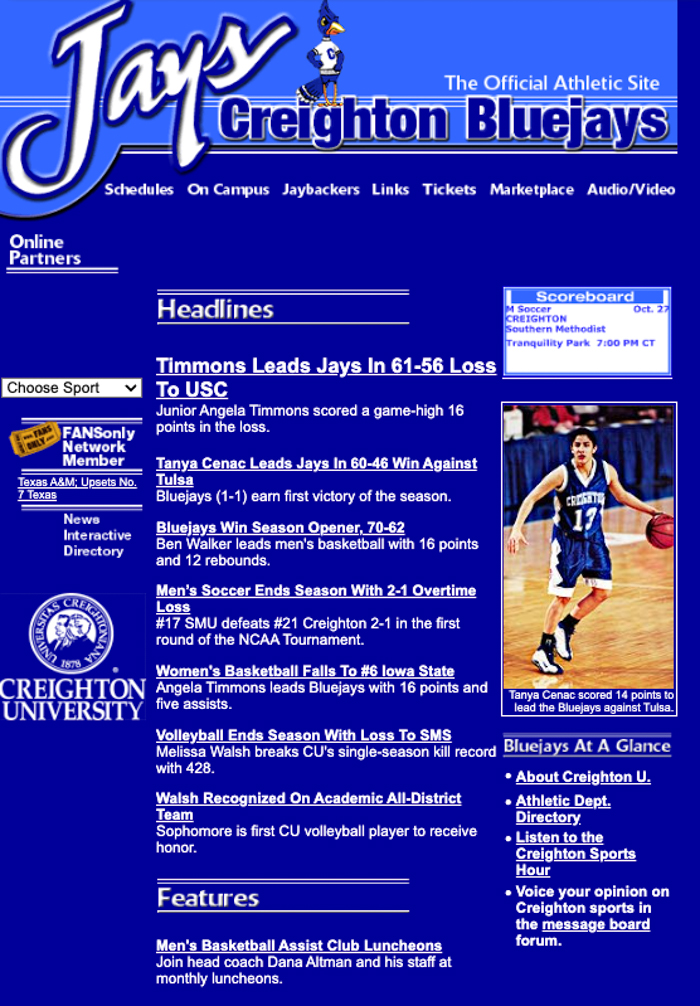
It’s come a long way from these humble beginnings. Here’s what GoCreighton.com looks like today.
* * *
Better connections
20 years
By 2004, Creighton’s connection to the Internet was complicated, arduous and unreliable, often out of service for hours at a time.
For the previous three years, the University had accessed the Internet through a long, winding path that required several middlemen. It worked like this:
Creighton rented an Internet connection through the University of Nebraska-Lincoln. Whenever traffic left Creighton’s campus, it was funneled through the University of Nebraska at Omaha to UNL, which, in turn, relied on Alltel as its Internet Service Provider. Since Creighton was at the end of the line — Alltel > UNL > UNO > Creighton — it experienced the fallout of any outage anywhere along the path.
This wasn’t sustainable, so Creighton established a second, more direct connection through Cox Communications that increased the amount of bandwidth and reduced the amount of downtime. A new era for Creighton Internet.
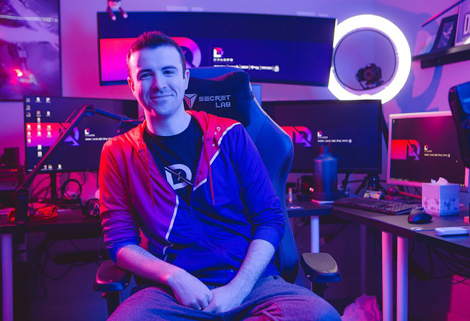
* * *
Related story: See how the JayNet LAN connection led one alum to a career as a famous video game streamer
* * *
Creighton’s presidential search: the website
10 years
In 2014, the Creighton Board of Trustees announced its search for the University’s 25th president, and the University created a site that posted all the latest news and updates.
After a year of posts highlighting the committee’s progress and feedback from the Creighton community, The Rev. Daniel S. Hendrickson, SJ, PhD, was announced as Creighton’s new president in December 2014. He started his term the following summer. Fr. Hendrickson will begin his 10th year as Creighton president in July.
* * *
The new Creighton.edu
10 years
In 2014, Creighton.edu’s homepage was relaunched as a modern, responsive (i.e., looks good on mobile) website. This was the start of a major undertaking that led to the update of tens of thousands of pages across the site.
The site in 2014:
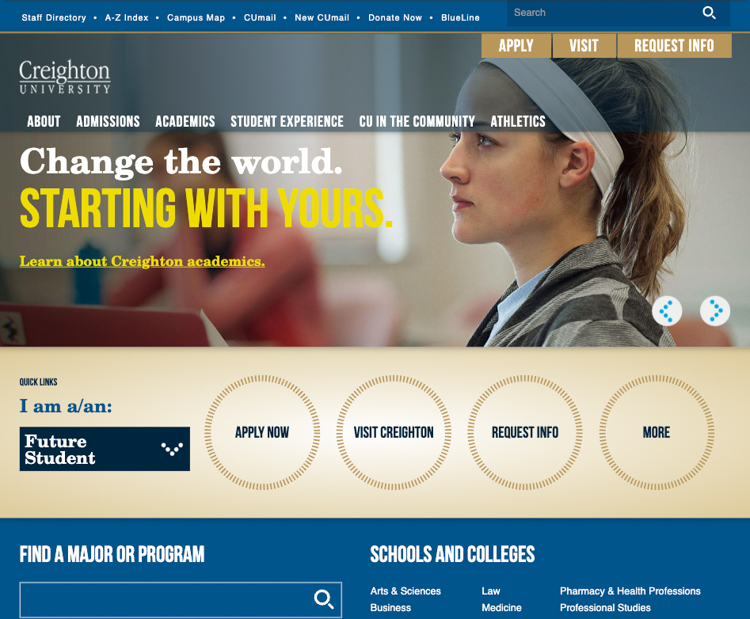
* * *
And speaking of Internet content, be sure to check out the …
Year of Years 2024 archive
Read more in our series highlighting 2024 anniversaries in Creighton history.
Year of Years, part 2: Red McManus, Muhammad Ali, The Ruth, Bruce Rasmussen, Mike Heck and more
Year of Years, part 1.5a: Five decades of the Kiewit Fitness Center
Year of Years, part 1.5b: The history of Creighton's swimming pool
Year of Years, part 1.5c: Alumni memories of Creighton’s pool and swim teams
Stay tuned for another edition in our Year of Years anniversaries series in the coming weeks. And check out previous anniversary roundups from:
